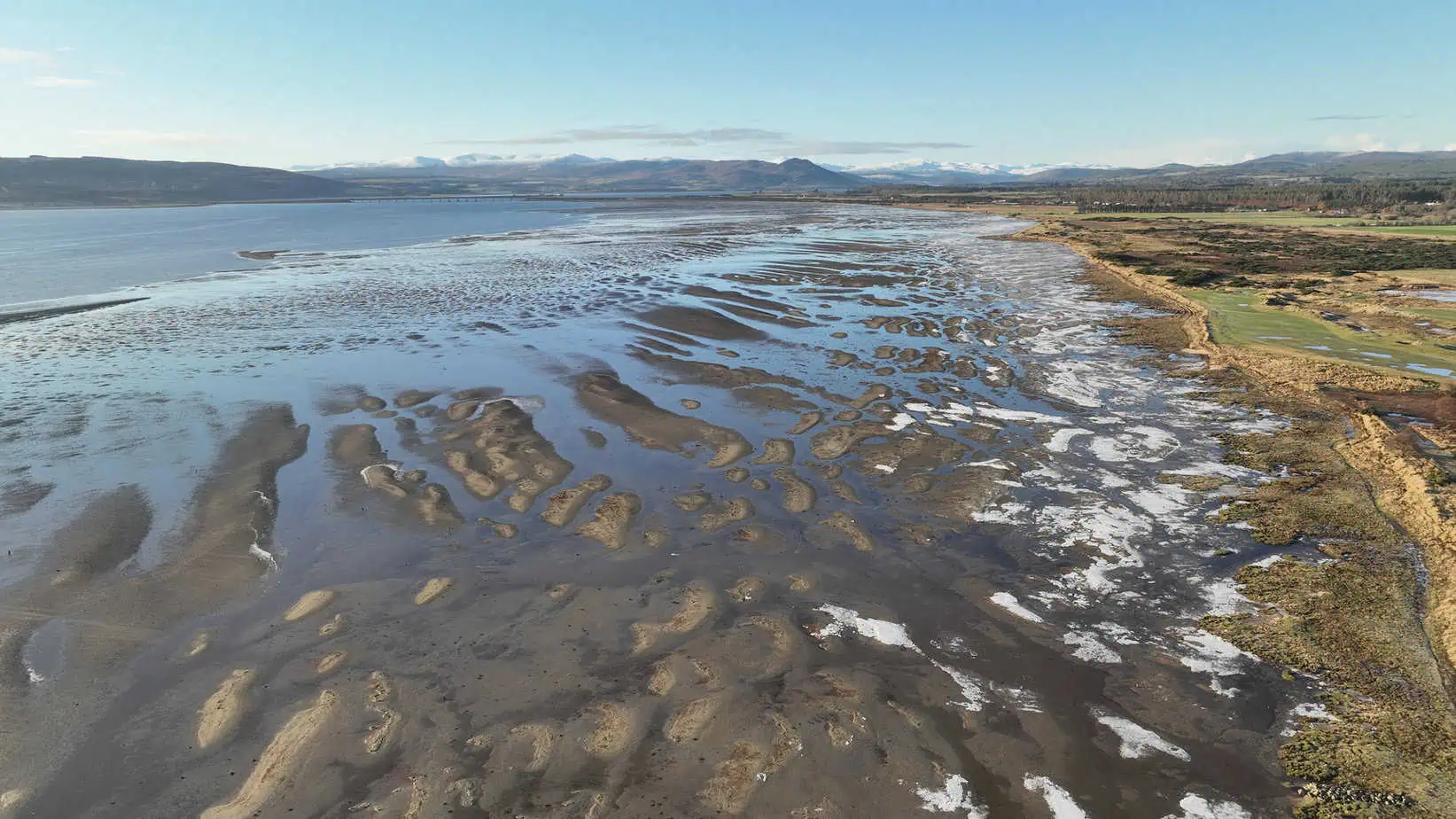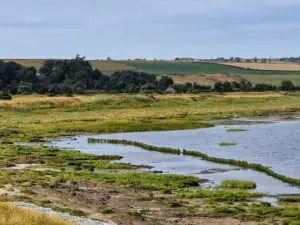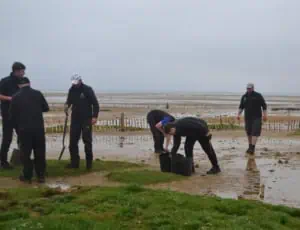Salt marshes at St. Andrews and Dornoch can grow again
This is a second world, hidden behind the hustle and bustle of the world-famous golf courses around the Old Course of St. Andrews and the Royal Dornoch Golf Club in Scotland. Green Shores is the name of the University of St. Andrews‘ project to restore salt marshes. You can look at it from the ninth tee of the New Course at St. Andrews or along the coastal holes of the Struie Course in Dornoch. Checking drone images of the areas, you can see the cracks and gaps in the salt marshes that allow the golf courses to flood and the coast to erode during storm surges. “Essentially, we’re attempting to fill these gaps with new saltmarsh,” explains Dr. Clare Maynard, who is leading the project.
“Over time, the new saltmarsh blends with the natural stands.” Salt marshes’ functions should not be underestimated: They increase biodiversity, serve as natural coastal protection against storm surges and erosion, filter nutrients from the water, and help improve water quality. They are also important carbon sinks that can bind and store large amounts of CO₂.
Salt marshes are under threat worldwide
The global situation is not good for salt marshes: Urbanization and infrastructure development along coastlines have reduced them, as has conversion to landfills or land reclamation. Rising sea levels threaten them anyway, and sewage, pesticides and nutrient inputs from agriculture are impairing their functioning. In Scotland, just 7000 to 8000 hectares of salt marshes remain.
The restoration of the salt marshes is a small-scale process that begins in St. Andrews, hidden behind a wall near the Eden Course in a so-called polytunnel. Green Shores is supported by the Scottish Government’s Nature Restoration Fund, managed by Nature Scot. “Here we are working with volunteers to develop the plants that we will later release in the marshland,” explains Dr. Helena Simmons, who is also involved in the Green Shores project. The Links Trust of St Andrews provides the site and is also involved in some of the funding, while the hours of work are largely carried out by volunteers from St Andrews, who have long recognized that the coastline of the university town is permanently affected by erosion from high tides and flooding.
The plants that are released here in St. Andrews are different to those in the Dornoch Firth, off Royal Dornoch. “It’s important that they are the plants fully adapted to the local environment,” explains Simmons. Once they are big enough, they are released into the marshland, which is protected by small fences behind which the sand sediments are trapped, but which also save the young plants. The scientists started a similar experiment in Dornoch in 2018 with bio-mats consisting of nets into which coconut fibers are incorporated.
“Unfortunately, the biorolls didn’t withstand the storms and most transplants were washed away in the first winter,” summarizes Maynard.
With the small fences, the situation has changed and successes are being achieved in both Dornoch and St. Andrews.
These are measured using hyperspectral imaging, which documents the growth of the areas and the height of the marsh.
In the middle of the salt marshes in St. Andrews, all the insects are buzzing in summer. A closer look reveals bright yellow algae and mosses, deep blue flowers and a variety of plants. Then you look out towards the sea, and the question arises as to whether all this isn’t somehow a Sisyphean task. Simmons points to all the areas that have already been added in St. Andrews and cheerfully refers to the success of Green Shores in Dornoch.
“If we don’t even try to improve the situation, we will definitely fail.”








 Image: Petra Himmel
Image: Petra Himmel